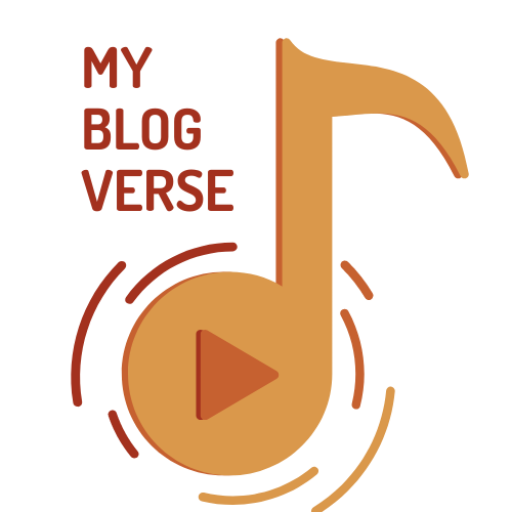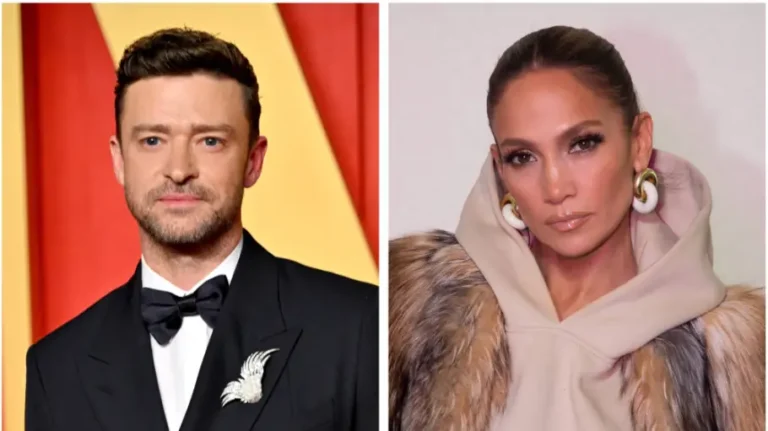Fifty may be the new forty in some areas of life, but popular music isn’t one of them.
With very few exceptions, pop musicians make their most vital work in their twenties and early thirties, and even if they continue to perform to sold-out arenas into their eighties, as the Rolling Stones have, the fans are largely indifferent to their new music and just want to hear the hits — leading to the seemingly counterintuitive situation of artists with sold-out tours connected to new albums that are, comparatively anyway, flops.
Yet the level of ambition and ego required to reach the top in the first place rarely fades with age, and those artists’ desire/ desperation to remain relevant can reach cringeworthy levels — especially in the ‘80s, when the Stones, David Bowie, Paul McCartney, Elton John, Bruce Springsteen and even Joni Mitchell and Leonard Cohen tried (or were persuaded) to remain contemporary with now-horrifically dated production techniques.
Even those who’ve tried to continue innovating — the Stones with the early-Prince-flavored “Emotional Rescue” and the dub-inflections of “Undercover,” Bowie’s ill-advised explorations of industrial and drum n’ bass in the ‘90s — eventually realized that’s not what their fans wanted and reverted to some form of their former selves, usually with lucrative results. That’s the common model now: At the top of the spectrum, many of the above-mentioned artists enjoy a comfortable lifestyle of multimillion-dollar-grossing greatest-hits tours in arenas and stadiums, with the new material serving as a bathroom break for the audience.
But still, they try, and like every rite of passage since the dawn of humanity, each generation has to learn it for themselves. Recent cases in point: the new albums from Justin Timberlake and Jennifer Lopez, and Madonna’s “Celebration” tour.
In January, Timberlake’s long-expected but unfortunately timed return from the wilderness was preceded by a bulldozer of a rollout as familiar and heavy-handed as it was safe and dated: A week of daily, increasingly loud announcements and online teasers leading up to a song release and album and tour announcement, and an obnoxiously self-referential appearance on “Saturday Night Live” featuring a revival of his longstanding bromance with Jimmy Fallon. The two of them not only chewed up the scenery but went full Godzilla on it, crashing into show host Dakota Johnson’s opening monologue like a reunited pair of drunken college bros and then reviving one of their tired old skits, all in the show’s first 15 minutes. The bulldozer rollout continued in the weeks leading up to the album, with club shows in Memphis, New York and Los Angeles, the latter of which briefly delivered a mouthwatering moment for fans: the NSYNC reunion that he’ll hook up with but won’t commit to.
Minus the reunion, it’s almost identical to the rollout for his “20/20 Experience” album over a decade ago, as is the album itself, which comes off like trying to squeeze into an outfit you rocked in your early 30s that might still look good but is way too tight in the crotch: The music on “Everything I Thought It Was” is a solid if predictable revival of his classic sound, but the at-times cringingly sexual lyrics are like being forced to watch the happily married couple Timberlake lovingly sings about in other songs drunkenly dirty dancing.
Marital bliss, even as a happy ending, doesn’t have enough friction to opiate the 2020s masses either. Just ask J-Lo, whose “This Is Me… Now,” is a self-absorbed and self-financed $20 million multi-platform story of her reunion with Ben Affleck — a romance that was shipwrecked two decades ago largely by “Gigli,” their vilified 2003 rom-com collaboration. Lopez has focused on film in recent years and it shows — the two films associated with the project have landed relatively well. But the album — her first in a decade — was crushed critically, debuted at a deflating No. 38 on the Billboard 200 and then dropped from sight; her accompanying first North American tour in five years is said to be selling poorly.
Compare those dated flood-the-zone rollouts with the one from 30-year-old Ariana Grande’s for her first album in three and a half years, which she teased with a few Instagram posts, released to rapturous reviews and followed with an “SNL” appearance that was tasteful where Timberlake’s was mostly tacky. The comparison isn’t fair — she’s still in the growing stage of what is likely a very long career — but the low-key approach let the fans fuel the hype for her. Sure, that’s easy to do when you’re nearly as virtuoso at social media as you are at singing (and avoiding overexposure in advance of a big-screen starring debut in “Wicked” late this year), but her cadence was telling.
Which brings us to Madonna, who finally hit pause on overloading her concerts with sub-par new material and launched a triumphant greatest-hits tour last year. Prince, her rival and contemporary, had showed a similar stubbornness from the mid-‘90s to the early ‘00s, issuing a series of mostly dreadful albums while flatly refusing to play hits during many of his concerts. He capitulated with the 2004 “Musicology” album and hits-filled tour, which topped $87 million and was the highest-grossing trek of that year. For the rest of his career, he had it both ways, releasing new albums to mostly indifferent response while making millions on tour.
With characteristic contrariness, Madonna waited to make such a move until she literally reached retirement age, instead parsimoniously doling out a handful of classics during her concerts while forcing fans to sit through long segments of the pompously conceptual “Madame X” or the sterile dance-pop of “MDNA.” Not surprisingly, the “Celebration” tour has been received with a level of religious reverence the singer hasn’t inspired in decades.
So it often goes in the mature era of a formerly can-do-no-wrong musical career, when age and decades of success cocoon the superstar from reading how completely the room temperature has changed. So who is aging gracefully? It’s an ongoing challenge that has no one-size-fits-all.
Sade, Missy Elliott, Maxwell and even the late George Michael thrive on scarcity, underdelivering rather than overdoing it and leaving people thirsting for more. Sade has toured just twice and released only two albums in the past 25 years, although the group was reported to be working on new material … in 2018.
Others like Kelly Clarkson, Mary J. Blige, Queen Latifah and Pink maintain music careers while parlaying their screen savvy into talk shows, acting, hosting or podcasts. Although it feels unfortunate that such stellar vocalists are using their voices on talking, it’s a different kind of celebrity that has equal potential to make people’s lives better.
Bob Dylan, Neil Young, McCartney, Springsteen and others play both sides, touring regularly and doggedly releasing new material while feeding fans a steady diet of archival releases — often in lavish (and profitable) boxed sets — that, on the negative side, inevitably are far more vivid reminders of their genius than the new material, which can seem like an old-timers’ baseball game with slower pitching. Others fully own their age, like Jon Bon Jovi and Billy Joel, rather than going the hair-dyed approach that so many others do; Robert Plant has steadfastly followed his own musical arrow, spurning multimillion-dollar offers for a Led Zeppelin reunion tour.
And sometimes, albeit rarely, there’s a late-career bolt of inspiration. Dylan (“Time Out of Mind”), Young (“Ragged Glory”) and Marvin Gaye (“Sexual Healing”) have all had them. Kylie Minogue had a rare late-career hit single with “Padam Padam” last year, although that success even took her label by surprise.
And in an unimaginably bittersweet farewell, David Bowie’s brilliance seemed to return as he stared mortality in the face during the last year of his life, recording his most innovative and creatively inspired album in 35 years, “Blackstar” — and then died two days later. It’s an ending he’d have written, and kind of did.
Which isn’t to say that’s anything one should aspire to, except in its dignity. And dignity isn’t something we necessarily feel like we’re displaying here — but it’s tough love that makes us say it in the first place.
And to be fair, apart from the ham-handed lyrics, in a way Timberlake’s new album shows that he may have learned at least part of the lesson. After his 2018 album “Man of the Woods” — a partial attempt to branch out into more rootsy sounds — landed disastrously, he’s gone back to the energetic pop-R&B that made him into the icon he is. On “SNL,” we got all of it and then some on his first song, the would-be banger “Sanctified,” which saw him joined by a talented but hyperactive band and a battery of dancers, finishing with 20 people on the small stage; the performance was immediately followed by an ad for his forthcoming year-plus-long tour. It was like watching a bachelor party flexing down the Las Vegas Strip in an open-top stretch limo on New Year’s Eve.
But his second track was the opposite. Accompanied by just two musicians and a backing track, he sang “Selfish,” the album’s soft-launch first single — a beautiful R&B-tinged ballad with a lilting melody and a falsetto flip on chorus that’s a perfect fit for his soulful voice. And as he soared through the song’s peaks and dips and caressed the lyrics and melody with that voice and his graceful and trained gestures, gradually building the intensity to a peak on the middle section before easing it gently back down for the ending, you were reminded all over again what a world-class singer and what a one-in-a-million talent he is. Why? Because there was no clutter or noise or hamming — it was just him and the song.
Maybe that’s how it’s done.
![]() Post Views: 1,566
Post Views: 1,566

